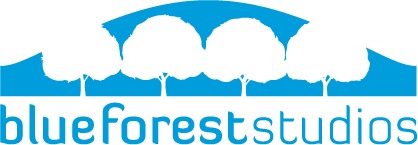Different Animation Styles Available For Your Video
Even the greatest animation studios in North Carolina may be missing the ideal animation style for your brand.
Animation videos are created often, but aren’t always used to their full potential. Many buyers order a video style without understanding its strengths or weaknesses. The result is a film that packs a weakened return-on-investment. That’s not something you’d want to hear if you just spent tons of money to boost your brand.
In this animated video explainer, we will work to make your options simple for you.
Meanwhile, we’ll discuss a handful of common animation questions.
This includes:
What is an animated video?
What are the differences between animation styles?
Which animation style should I use?
Let’s start with the basics.
What is an animated video?
Animated video is a form of videography that plays individual images together to simulate motion. Animation is the reverse of traditional film, which breaks movement down into separate images to record it for playback. There are a number of animation studios in North Carolina.
Animation can come in a few different forms. Depending on your message, tone, and audience, you’ll want to find a style that complements your vision.
To properly pick the type of animation for you, you’ll need to learn your options.
What are the different types of animation?
The five main forms of animation include: traditional, vector, computer generated, stop motion, and motion graphics. Some of these artforms mingle to emulate older styles through computer production. Modern animated footage is mostly created and played back in digital formats.
Each type of animation has its own history which differs from how we use it today. The earliest forms were drawn on paper in a time-consuming tracing process.
On the flip side, modern animation relies on computers for a timely, sharper product. Additionally, some methods can combine to create hybrid techniques.
To keep things simple, let’s focus on how to use it in your current video.
Nowadays, traditional animation or “hand animation” use computers, rather than paper. Each frame would be drawn out in the past, but new technology has made this style obsolete. The change is due to the increase in time and cost efficiency. Disney’s “Steamboat Willie” cartoon versus the “Princess and The Frog” film is an example.
Computers create digital animation (2D) to effectively mimic the old way of making frame-by-frame hand drawings. However, “computer interpolation” can calculate and fill in the movement frames between key positions. This is known as “vector animation,” an option that eliminates the need for drawing all individual motion frames.
Computer generated (3D) uses three-dimensional digital figures that move like puppets. Since this method requires no hand-drawn models, artists save even more time. The increase in realism on these models allow for use within live action footage. Modern cinema uses this very frequently.
Stop motion uses individually-framed movements of static objects to show motion. A physical figure (versus hand-drawn or computer generated) is manipulated in small movements. Each change in position is captured on film for rapid playback.
Motion graphics are based around animated texts, images or video snippets. The visuals are edited with transitions and frame scenes for a naturally-moving result. Advertisements and various promotional materials widely use this type of animation.
How do I choose the best animation for me?
Base your video animation choices on your needs and message. Firstly, your budget decides if you can use time-consuming styles like hand animation. Finally, animated film is most effective when taking the “less is more” approach.
Vector animation and motion graphics provide adequately for your brand without breaking the bank. They require less time (relatively) and are less likely to overwhelm the core message of your video.
In summary, you have many animation options to bring your video vision to life. You may want to spend some time viewing styles to decide what your brand needs.
Ultimately, you’ll want to talk with a team that’s experienced with using the right tools for stories like yours, so do some research on the different animation studios in North Carolina. We at Blueforest Studios love to have visitors–set up a chat to see if we’re a match today!


